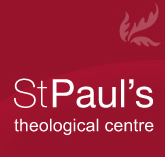Bauckham’s Jesus and the Eyewitnesses - Part 12
 This is a truly fascinating section in Bauckham’s argument. Enjoy the read!
This is a truly fascinating section in Bauckham’s argument. Enjoy the read!Click here for the (continually updated) series outline.
--
The inclusio of eyewitness testimony
Do the other Gospels evidence anything comparable to Luke’s prologue? Building on the key observation made explicit in Luke’s prologue - that principal eyewitnesses were those who had been present ‘from the beginning’ - Bauckham argues that the Gospels evidence a ‘literary device’ used to mark the principal eyewitnesses. This is a bold move, and one can arguably appreciate this suggestion only in the light of his case concerning the importance of principal eyewitnesses in ancient historiographical practice.
This ‘device’ found first in Mark’s Gospel, and observed in the mention of Peter’s name at both the beginning and end of the story, emphases that this eyewitness was present from the beginning to the end of Jesus’ ministry. The first reference (1:16) involve as an awkward double mention of Simon’s name, while the final reference in 16:7 forms ‘an inclusio around the whole story’. What evidence is there to support this claim?
First, Papias’s witness always suggested Peter’s hand in the Markan Gospel. [Bauckham’s whole argument will thus fly in the face of Joel Marcus’ claim that ‘were it not for Papias, one would never suspect that the Second Gospel were particularly Petrine.’ J. Marcus, Mark 1-8 (AB27; New York: Doubleday, 1999) 24.]. Second, the frequency of Peter’s name in Mark’s Gospel is indicative of the important part Peter played in this narrative. Third, Peter ‘is actually present through a large proportion of the narrative from 1:16 to 14:72’. However, also important is the evidence that comes to light when this inclusio device in Mark is compared with its reception and change in the Gospels of John and Luke.
Both John and Luke preserve the Markan ‘Petrine inclusio’, thus indicating their indebtedness to the Petrine testimony within Mark which they use for their own Gospels. However, the inclusio is altered by both J and L in such a way that indicates its presence was recognised by both John and Luke, and was exploited to make a different claim. Bauckham’s analysis of the material in the fourth Gospel leads to the conclusion that John:
‘uses the inclusio of eyewitness testimony in order to privilege the witness of the Beloved Disciple, which this Gospel embodies. It does so, however, not simply by ignoring the Petrine inclusio of Mark’s Gospel, but by enclosing a Petrine inclusio within its inclusio of the Beloved Disciple’ (129).The beloved disciple is introduced at the beginning of the narrative unobtrusively ‘but rather immodestly in that he displaces Peter from the position of absolute priority’. Put directly: ‘John’s Gospel thus uses the inclusio of eyewitness testimony in order to privilege the witness of the Beloved Disciple’. Indeed, John’s Gospel seems to imply a friendly competition between Peter and the Beloved disciple such that the importance of the Petrine testimony (via Mark – Bauckham considers it most plausible that John expected his readers knew of Mark [R. Bauckham, ‘John for Readers of Mark,’ in R. Bauckham ed., The Gospels for All Christians: Rethinking the Gospel Audiences (Grand Rapids: Eerdmans/Edinburgh: T. & T. Clark, 1997) 147-171.]) is played off against that of John. Bauckham sums up:
‘So three of the four Gospels evidently work quite deliberately with the idea that a Gospel, since it tells the whole story of Jesus, must embody the testimony of witnesses who were participants in the story from beginning to end - from the time of John the Baptist’s ministry to the time of the resurrection appearances. These three Gospels all use the literary device of the inclusio of eyewitness testimony in order to indicate the main eyewitness source of their story. This does not, of course, exclude the appropriation also of material from other eyewitnesses, and we shall see that these Gospels also do that’ (131)Matthew’s Gospel seems uninterested in alluding to the principle of eyewitness testimony, a point coherent with the uniquely Matthian feature that he adds no names ‘to those occurring already in Mark, while actually dropping several of the names in Mark’ (132). However, Luke’s Gospel, like John’s, shows a striking re-appropriation of Mark’s inclusio, and includes another of his own indicating the presence of the female eyewitness sources. While Luke is, like John, dependant on the Petrine tradition through Mark, and indicates this in the broadest inclusio, the mention of the names of the women in Luke at both 8:2-3 and 24:5-7 form another inclusio, ‘bracketing all but the earliest part of Jesus’ ministry’, indicating Luke’s reliance on their testimony. Striking is that Luke doesn’t refer to the women by name, as does Matthew, Mark and John, when they are present at the cross. ‘Instead, he reserves that information until the end of his story of the women’s visit to the empty tomb: ‘Now it was Mary Magdalene, Joanna, Mary the mother of James, and the other women with them who told this to the apostles (24:10).’ This implies that Luke was careful to only name the women to indicate the end of the inclusio of their eyewitness.
Naturally, a question that would be interesting to pursue involves the nature and significance of Matthew’s Gospel, especially if it seems not to allude to eyewitness testimony.
Labels: Book Review, Jesus and the Eyewitnesses








9 Comments:
I was very impressed with this artwork!
Well, at least something impressed!
A very interesting argument.
I decided long ago that the synoptic Gospels are reliable in the essentials of Jesus' words and, to a lesser extent, his deeds.
I make no bold claim here for the events that are furthest out-there: e.g., the Transfiguration. On the other hand, I think it is abundantly clear that Jesus was regarded as a worker of miracles (carried over, for example, to the Talmud). In particular, Jesus was regarded as a healer. Thus the synoptics accurately record the sort of ministry Jesus was remembered to have carried out.
That said, I have some quibbles with Bauckham's insistence that the Gospels rely heavily on the witness of the Twelve.
First, the question (for me) is not whether there is reliable eyewitness testimony for the core elements of Jesus' words and deeds, but how much mythology was overlaid onto the eyewitness testimony to history. I know, we're told that Peter was present on the occasion of the Transfiguration. But the bare assertion doesn't make it so, even within the context of the inclusio Bauckham directs us to.
Second, I think Dunn is right (I know, I always seem to agree with Dunn) to emphasize the eyewitness testimony of unnamed people in the communities where the events actually took place. Jesus comes to some little village, performs a remarkable healing, and the people rehearse the story repeatedly. Some such stories took on a life beyond their original setting, and were carried to other towns and villages. Eventually, some of those stories were bound to be incorporated in the Gospels, without any necessary connection to Peter or one of the other Apostles. Bauckham seems to discount such a possibility.
Third, I always get skittish when John is included in the mix. It is manifest that John offers us deep theological reflection into Jesus' ministry: a reading-back of theology into the historical events. To a lesser extent, this is also likely to be the case with respect to the synoptics. But the synoptics retain a solid historical core and overlay their theology (and mythology) on it; whereas John is thoroughly revisionist in putting words into the mouth of Jesus to accord with his theological insights. Or so it seems to me, and to most scholars.
(The classic example for me is, "Before Abraham was, I am"; whereas I see absolutely no claim to preexistence in the synoptics. This is John's theology placed on Jesus' lips.)
Bauckham is unable to identify an inclusio in Matthew, but he finds one in John. To me, that undermines his argument: John's inclusio coexists with an unhistorical account of Jesus' words. So is the inclusio really a guarantor of historicity? Evidently not.
Matt falls in line with RB's earlier comments--names can drop out for Matt as it is later and thus names are no longer as important for eyewitness and other purposes
Well... I made yet another trip to the seminary bookstore on Friday and STILL no copies of 'Eyewitnesses' have arrived. So at least in this North American city where I live, there are no eyewitnesses to the actual physical existence of this book!
Rumour has it that the Eerdmans delivery truck broke down somewhere around the Michigan border...
Seriously, I wonder what Dr. Bauckham thinks about these delivery problems dogging his magnum opus and which are STILL continuing into the end of January 2007, delivery problems which the Eerdmans representative who posted on this blog refused to admit even existed!
Readers may be interested to know that Rick Brannan is taking up one of Bauckham's lines of argument and applying it to Acts 18:19-21. See his blog of 18th Jan http://www.supakoo.com/rick/ricoblog/
Thanks, Chris, for another good summary of another intriguing chapter.
Richard F.
Hi Stephen,
Thanks for these incisive comments (especially our last paragraph). You write: ‘First, the question (for me) is not whether there is reliable eyewitness testimony for the core elements of Jesus' words and deeds but how much mythology was overlaid onto the eyewitness testimony to history’.
I think of relevance here is how one handles eyewitness testimony at all, and I’ll return to this issue later.
‘Eventually, some of those stories were bound to be incorporated in the Gospels, without any necessary connection to Peter or one of the other Apostles. Bauckham seems to discount such a possibility.’
He doesn’t actually. To be honest, Bauckham does a good job, I think, in developing certain side comments in Dunn into a more thoroughly worked out thesis. Arguably, Bauckham has shown that Dunn doesn’t account for the association of tradition with named individuals enough.
‘Third, I always get skittish when John is included in the mix’
I totally understand your feeling on this. Again I must defer comment until I have overviewed the parts of the book focusing on John (the later chapters)
‘Bauckham is unable to identify an inclusio in Matthew, but he finds one in John. To me, that undermines his argument: John's inclusio coexists with an unhistorical account of Jesus' words. So is the inclusio really a guarantor of historicity? Evidently not.’
Bauckham’s take on John is more nuanced than simply ‘It is reliable history’ - It is developed theology precisely because John was an accredited eyewitness, and so he was uniquely qualified to develop theological layers of interpretation. As I said, I’ll return to these matters later in the series.
Great comment, thanks for expressing some of my thoughts.
‘Matt falls in line with RB's earlier comments--names can drop out for Matt as it is later and thus names are no longer as important for eyewitness and other purposes’
Good point, JB!
Sorry it hasn’t arrived yet, ‘Plain John Smith’. It will be worth the wait.
Thanks for that link, Richard.
Hey but surely the point about John is that it uses a variety of sources, almost certainly a signs source, a chronology maybe, and had at least 2 seperate versions and probably a final edit.The eyewitness claim could be made for the very earliest of these. Even Bultmann was willing to grant an historical witness to parts of the gospel, although he seems to contradict this elsewhere.
Post a Comment
<< Home